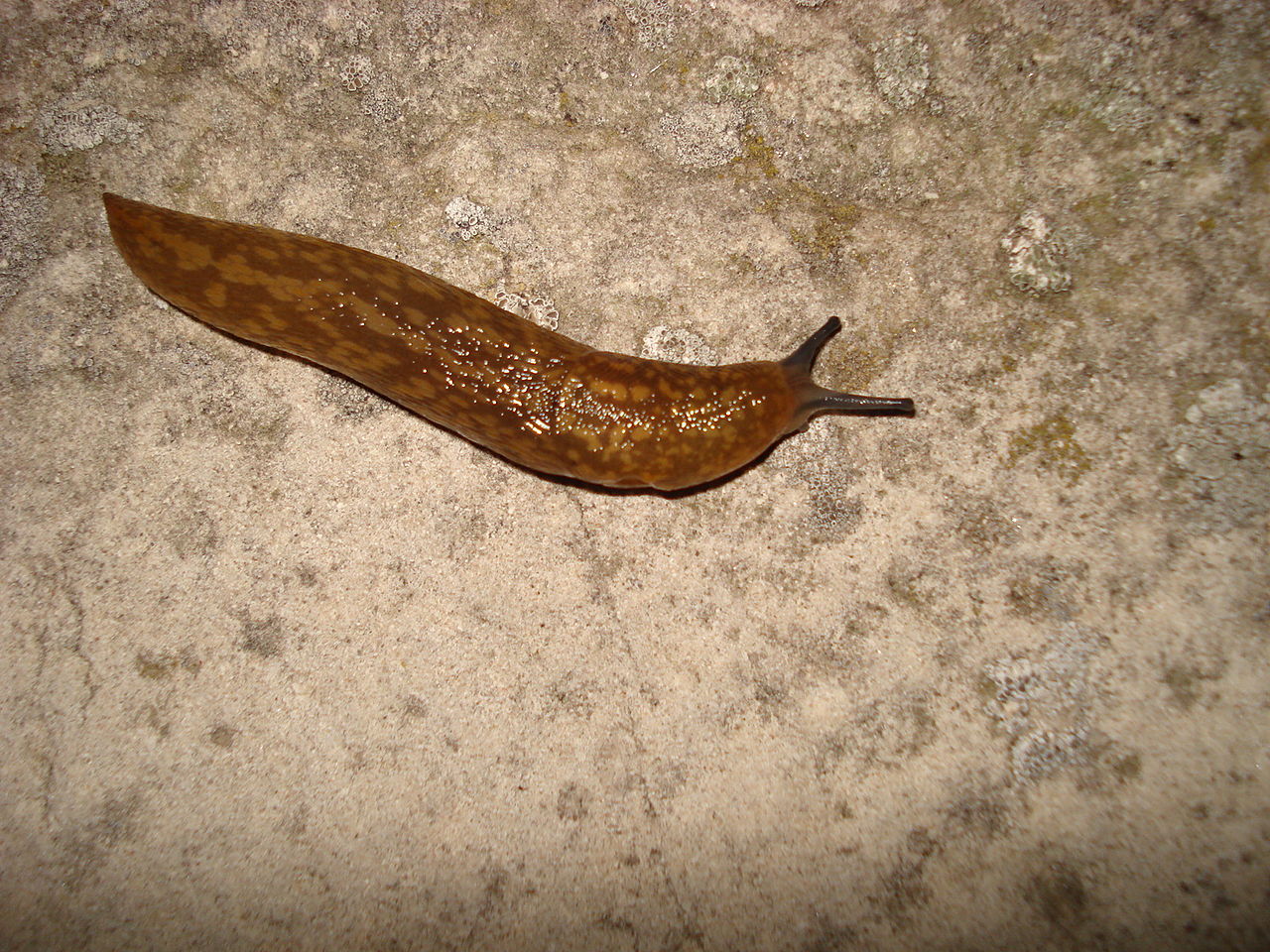Limax flavus
Yellow Garden Slug
Synonyms: Limacus flavus
Class: Gastropoda
Order: Stylommatophora
Family: Limacidae

Photographer: Maderibeyza
Source: http://commons.wikimedia.org/wiki/File:Salyangoz.JPG
Description
Limax flavus is a medium to large air-breathing, land slug that measures about 3 to 4 inches when the body is extended. This slug has a yellow body with grey mottling and pale blue tentacles, which help the snail be aware of its environment. This species is strongly associated with human habitation, and is usually found in damp areas such as cellars, kitchens, and gardens. Limax flavus is nocturnal in nature and thus it is often unnoticed and people are unaware of how (relatively) common the species is.
Ecological Threat: Limax flavus is mostly associated with houses and gardens and is known to venture indoors especially cellars and basements, after dark. Feeds voraciously on seedlings and vegetables so where it does occur on agriculture and horticulture lands it can do serious damage. This makes Li max flavus an economic and ecological threat in states where it is well-established.
Biology: Eggs are laid in clutches of varying sizes from 12 to 32 eggs and joined together by strands of mucous. Egg clutches of L. flavus were frequently partially buried and measure 6.3 by 4 mm, several clutches can be laid by a single female slug in one day. In some, the outer gelatinous layer was a little thicker at the apices of the egg, causing it to appear more elongate. Overall, adults can live from 7.5 to 12 months.
History: Not much is known as to how Limax flavus got introduced into the United States but it was surely accidental. Slugs are known to hitch rides from the Mediterranean on pallets of tile and marble. Others bury deep in the soil of plants shipped around the world. Still others find their way into cracks on shipping containers, in crevasses of military hardware and aquarium supplies and between layers of wood products. Also, since Limax flavus is known to feed on vegetables and plant seedlings it could’ve been introduced through the crop or ornamental plant trade.
U.S. Habitat: Limax flavus feeds on decaying matter and mosses like lichen or vegetables; so it can be found in gardens or in basements and cellars.
Distribution
Native Origin: Southern Europe but well established in England, Ireland and Wales
U.S. Present: AL, AR, AZ, CA, HI, IL, IN, KY, LA, MD, ME, MO, NJ, NY, TX, WA and WI
Management
Management strategies for slugs are much the same as for other invertebrate pests such as insects. However, development of chemicals and research for biological control has been done mostly outside of the USA, and limits the options. Natural enemies of terrestrial slugs are relatively few. Some birds, especially ducks, feed on slugs and sometimes moles and shrews. Few predaceous insects attack slugs, but in Coleoptera the larvae of Lampyridae (lightning bugs) and adult Carabidae (ground beetles) do so occasionally. Some parasitic flies (family Sciomyzidae and Phoridae) a few fungi and many protozoa are known to affect slugs. Phasmarhabditis hermaphrodita, a slug-parasitic nematode, is used in Europe to control slugs but is not allowed in the USA. Other nematodes found in the USA have been investigated for slug control, but the results were not encouraging. As mentioned in other gastropod invasive species pages, commercially produced metaldehyde slug traps can be set up to reduce slug populations.
References
Barker GM. (ed.) 2001. The Biology of Terrestrial Molluscs. CABI Publishing, Wallingford, UK. 558 pp.
Kerney M.P. and Cameron R.A.D. 1979. A field guide to the land snails of Britain and north-west Europe. Collins.
Internet References
http://www.itis.gov/servlet/SingleRpt/SingleRpt?search_topic=TSN&search_value=77309
http://entnemdept.ufl.edu/creatures/misc/gastro/slugs_of_florida.htm
http://eol.org/data_objects/14881334
 Texas Invasive Species Institute
Texas Invasive Species Institute